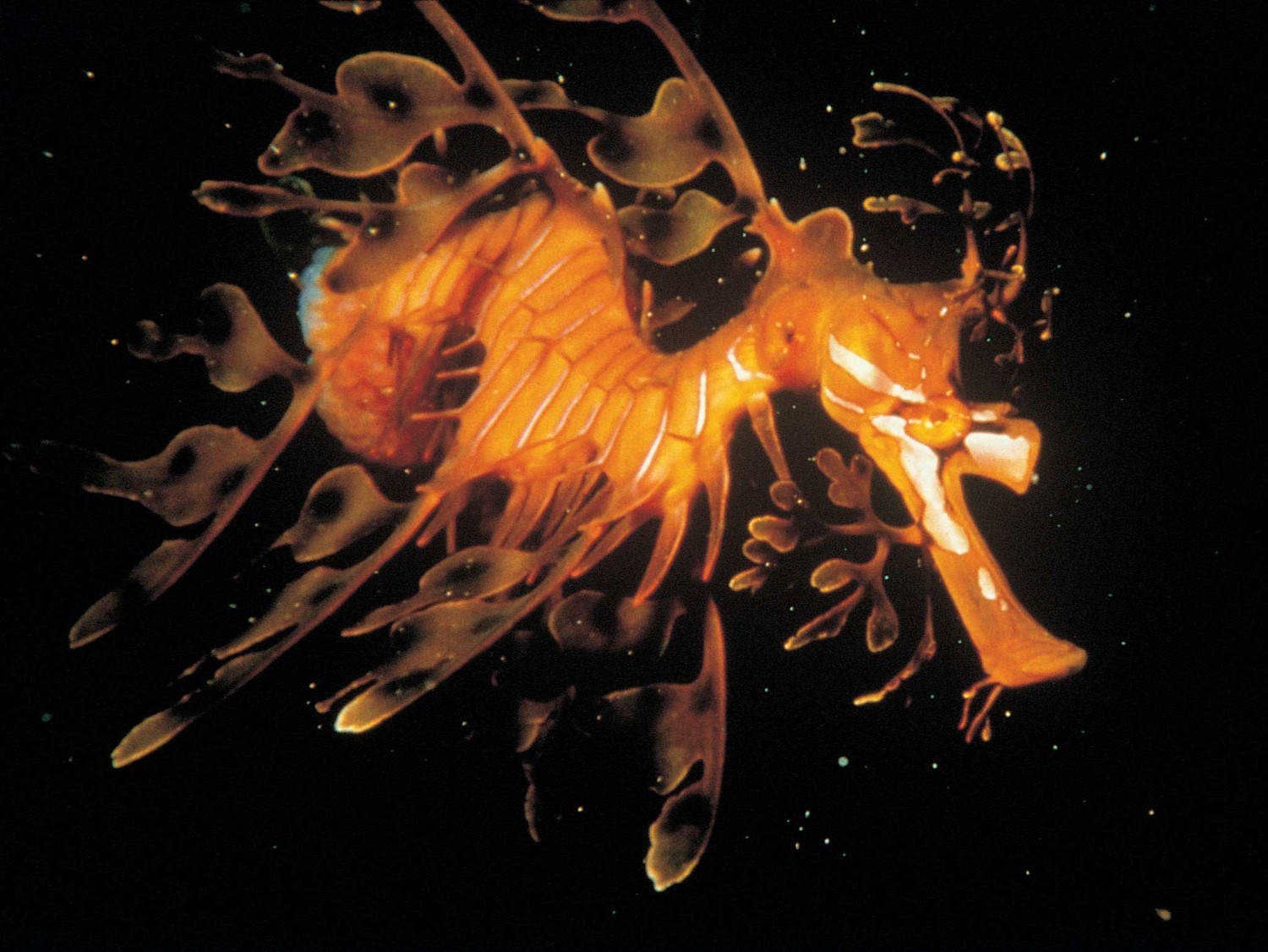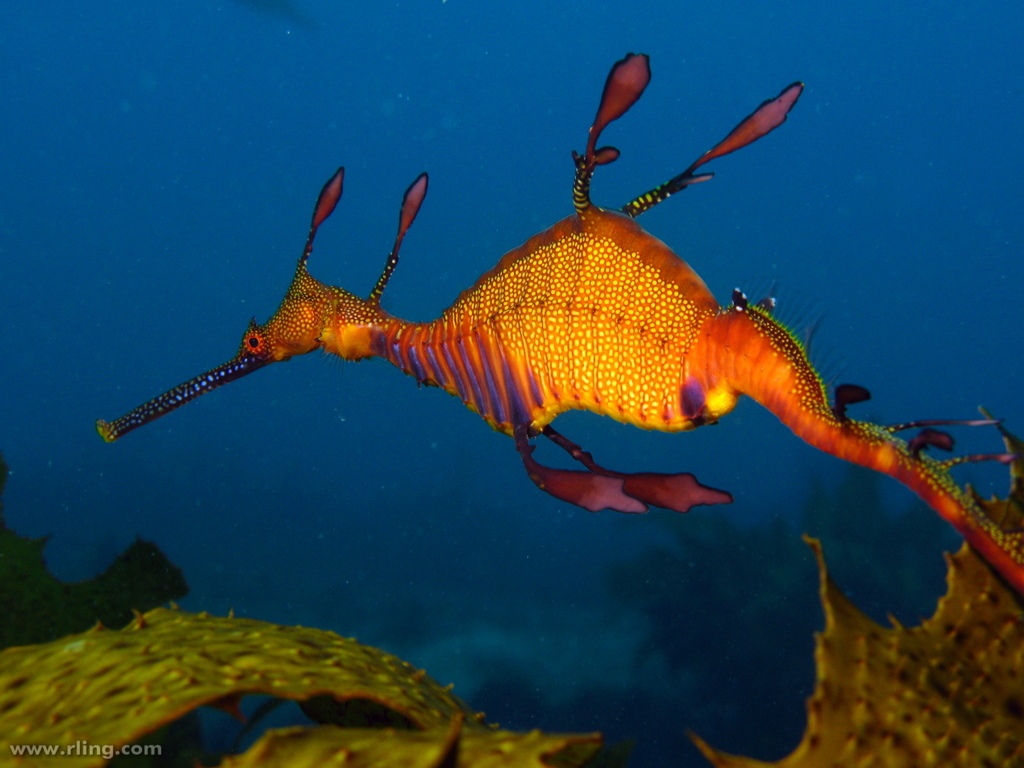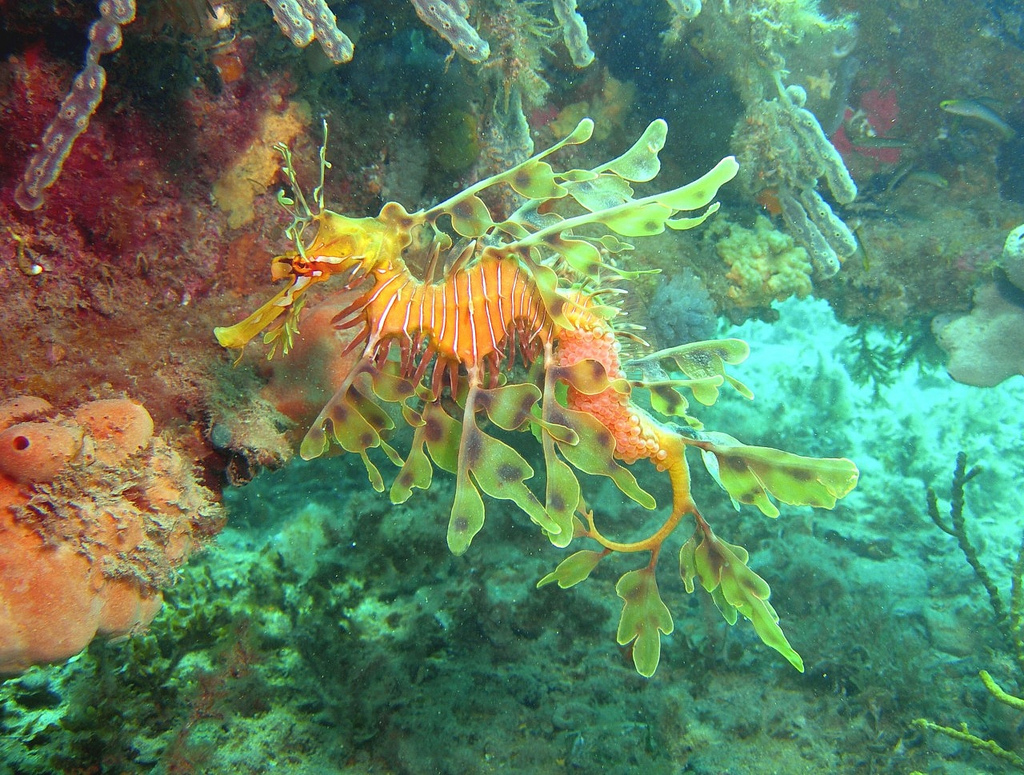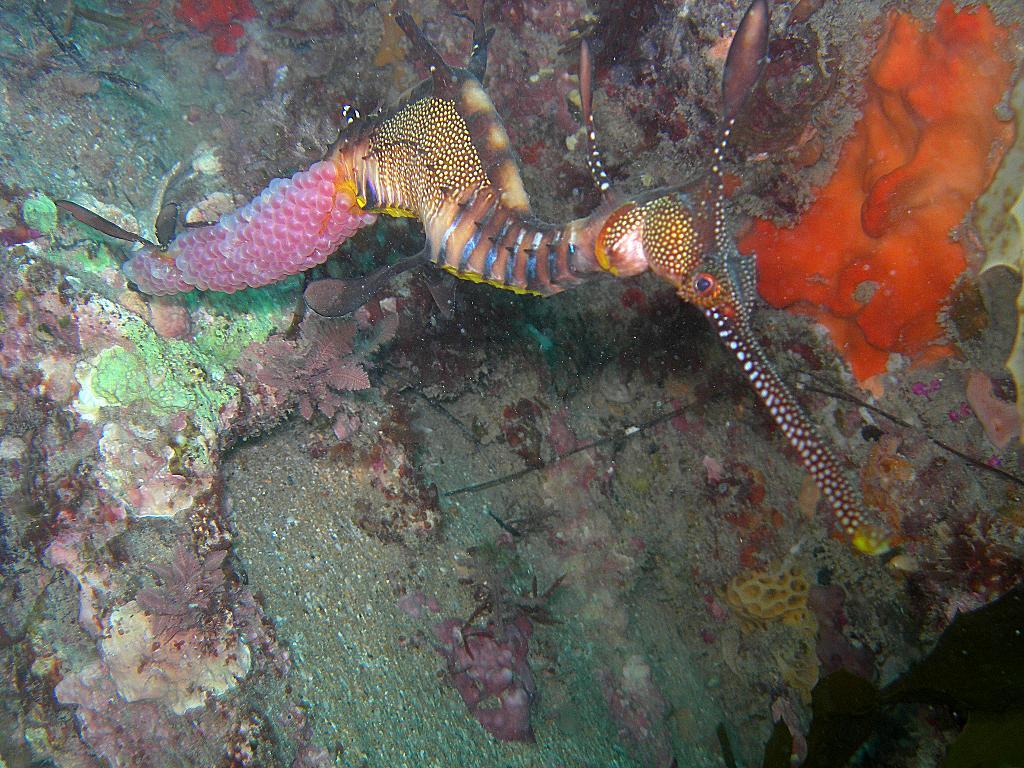Adelaide’s weather is warming up and now is the perfect time to learn about a cool underwater local. Read on to find out everything you need to know about seadragons.

Do seadragons exist?
If you type ‘seadragons’ into Google one the first things to come up is the question ‘do seadragons exist?’
A seadragon may seem like a mythical creature, but Adelaide actually has two types of them:
- leafy seadragon (Phycodurus eques) – also South Australia’s official marine emblem
- weedy seadragon (Phyllopteryx taeniolatus).


Are seadragons the same as seahorses?
Seadragons and seahorses are not the same thing but they are close fish relatives.

Similarities include:
- Tube-snouted mouths that allow them to suck up their food.
- Bony plates surrounding their bodies, instead of scales like most fish.
- Being part of the fish family called Syngnathidae.
An interesting difference:
Seadragon dads carry eggs under their tail. Whereas seahorse dads carry their eggs in a pocket on their belly.
Where do seadragons live?
Seadragons live in rocky reefs, seagrass meadows and sometimes under jetties.

How do seadragons reproduce?
Leafy seadragons
The leafy seadragon breeding season runs from around October through to January. During their breeding ritual, the female moves her eggs to cup-like structures under the male’s tail, where they are fertilised and are then carried until they hatch.

The male carries 250–300 eggs at a time and it takes around 5–6 weeks for those eggs to hatch, which happens over the period of about a week. Upon hatching, the baby seadragons are dropped off across the ocean floor.
Some males do this twice in a season!

Weedy seadragons
Weedy seadragons reproduce in much the same way as leafy seadragons. Males of this species will only carry one lot of eggs per season.

How you can help
Here are a few easy ways you can help seadragons:
- Submit your seadragon sightings to DragonSearch to help monitor the species.
- Pick up rubbish at the beach and then recycle or dispose of it properly, so that marine life doesn’t become tangled up in it.
- When diving or snorkelling, follow the seadragon code of conduct.
- When boating, make sure you anchor away from seagrass beds and reefs.
- If you plan to photograph seadragons, check out our photo tips first.
- Become a Coastal Ambassador. Sign up to our newsletter to find out about the next intake.

This story was originally published in December 2021.